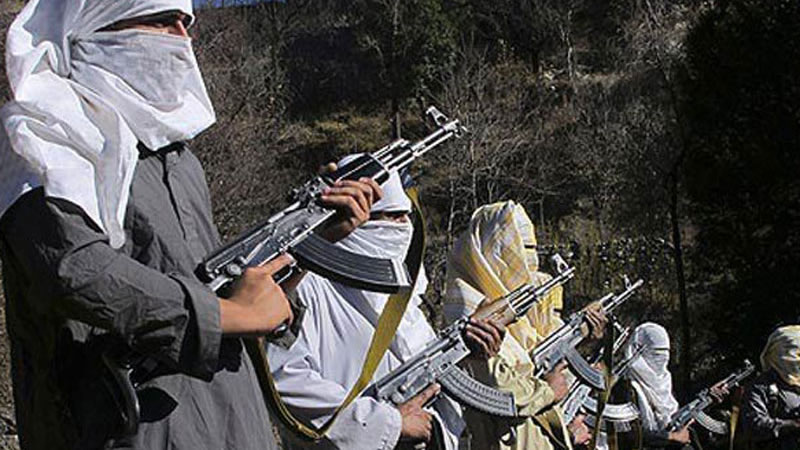 State Bank of Pakistan Annual Report 2009-2010, Statistical Supplement lowered Pakistan’s growth estimates from 4.5 percent to 3 percent for the current year no doubt owing to the financial losses suffered due to the floods estimated at 9.3 billion dollars. Pakistan’s growth for the last fiscal years, according to this report, was 2 percent.This is markedly lower than the provisional growth statistics released by the Economic Advisor’s Wing on June 4, 2010 based on nine months data for the last financial year: 4.1 percent. The difference of a hefty 2.1 percent between statistics released by the State Bank and the Economic Advisor’s Wing reflects that the economic slowdown had started before the floods. Public confidence in official data will be enhanced if the proposal to make FBS an autonomous corporate body is implemented in true spirit.And, the SBP is empowered to say ‘no’ to government borrowing for budgetary support, and keep within the agreed limits fixed by SBP to find the growth. This brings immediately to mind the famous remarks of the then chairman of the US Federal Reserves, Alan Greenspan, telling the then US President, Bill Clinton, quite bluntly that “I ain’t going to lower the short-term interest rates until you get some more control over budget deficit”.
State Bank of Pakistan Annual Report 2009-2010, Statistical Supplement lowered Pakistan’s growth estimates from 4.5 percent to 3 percent for the current year no doubt owing to the financial losses suffered due to the floods estimated at 9.3 billion dollars. Pakistan’s growth for the last fiscal years, according to this report, was 2 percent.This is markedly lower than the provisional growth statistics released by the Economic Advisor’s Wing on June 4, 2010 based on nine months data for the last financial year: 4.1 percent. The difference of a hefty 2.1 percent between statistics released by the State Bank and the Economic Advisor’s Wing reflects that the economic slowdown had started before the floods. Public confidence in official data will be enhanced if the proposal to make FBS an autonomous corporate body is implemented in true spirit.And, the SBP is empowered to say ‘no’ to government borrowing for budgetary support, and keep within the agreed limits fixed by SBP to find the growth. This brings immediately to mind the famous remarks of the then chairman of the US Federal Reserves, Alan Greenspan, telling the then US President, Bill Clinton, quite bluntly that “I ain’t going to lower the short-term interest rates until you get some more control over budget deficit”.
Greenspan’s ‘no’ to Clinton meant, according to Robert B Reich, who served as Secretary of Labour under President Clinton from 1993 to 1997, a lot of Clinton administration’s investment objectives in various areas, including health, higher education and infrastructure development, could not be sufficiently met.At present, the private sector is suffering due to government “excesses” and SBP is a mere on-looker, on the sidelines, albeit, blowing the whistle but unable to stop the game, viz. overspend and under recover the revenue projected in the budget approved by parliament. But what is most worrisome is that the parliament has no qualms about the blatant breach by the government of fiscal debt limitation threshold fixed in the Finance Bill 2009-10.
Be that as it may, the SBP growth forecast for 2010 – 3 percent – compares favourably with growth forecasts of our major trading partners: United States 3.1 percent, Euro-zones 1 percent, and Japan’s 1.9 percent. There is an obvious linkage between the two. Pakistani consumer exports were suffering due to the fact that our major trading partners in the West were undergoing a recession (evident from negative growth rates in the US, Euro Zone and Japan last year) and a positive growth rate in 2010 would automatically imply higher Pakistani exports.But then other countries competing with Pakistan in the same markets for similar goods managed to obtain higher growth rates. Further, what is more unfortunate for Pakistanis is that while most countries last year experienced very low rates of inflation (the world average was no more than 3.7 percent) yet Pakistanis were subjected to an inflation rate of a little under 12 percent. In other words, Pakistan had to depreciate its currency to remain competitive in the export markets.
The strategy of the SBP and the federal government in this regard was agreed with the International Monetary Fund (IMF) under the Stand-By Arrangement (SBA) was straightforward: the SBP must keep interest rates high in an effort to mop up excess liquidity and reduce the inflationary pressure and the federal government must desist from borrowing from the SBP and reduce its budget deficit. SBP managed to stay within the targets agreed with the Fund, while the government breached the quarterly fiscal deficits and continued to borrow from SBP.The federal government’s failure to meet the conditions that were agreed with the IMF negated the effectivity of the SBP strategy. Thus the federal government increased its debt and liabilities: domestic debt rose from 3,275 billion rupees in 2008 to 3,861 billion rupees in 2009 to 4,653 billion rupees in 2010 and external debt rose from 3,063 billion rupees in 2008 to 4,156 billion rupees in 2009 and 4,658 billion rupees in 2010.
To add fuel to the fire was the continued heavy toll the public sector entities (PSEs) placed on the budget as their indebtedness rose from 104 billion rupees in 2007 to 290 billion rupees in 2009 and is expected to rise to 375 billion rupees this year.With five months gone, Minister of Finance Dr Hafeez Sheikh’s commitment in his budget speech that the federal government would restructure 8 major PSEs is yet to materialise. But, so argue government supporters, the government is engaged in taking unpopular decisions that would turn the economy around at some point in the not so-far-future. Is this a credible assumption?There is little doubt that EU’s decision to grant us a three-year period of tariff concessions on some textile items may help. The textile exporters question this assumption. And, the textile ministry has asked EU to review and amend its list of items on concessional tariffs if indeed it wants to help Pakistan.
The SBP policy of keeping the real interest rates positive results in keeping the cost of borrowing high, obviously reduces private sector activity for expansion and new investment. Above all else, the government’s failure to deal with the energy shortage is further compromising the ability of our private sector to produce at optimum capacity with its obvious fallout on the country’s growth rate.It is no longer feasible to place the entire blame on the previous government for failing to raise generation capacity as the incumbent government has not cleaned its own house by eliminating the inter-circular debt, which accounts for lower generation of both electricity and gas at much lower than capacity, or taking measures to reduce the huge transmission losses. Continued energy shortages would keep productive sector activity dampened.
To argue that the flood damage estimated at 9.3 billion dollars is the major factor for the lower growth forecast is certainly a valid point, however, what has to be restated is that the government has so far not taken any concrete measures that would raise the comfort level of economists with respect to turning the economy around as: (i) federal government expenditure in spite of claims to the contrary is expected to witness the largest increase in one year compared to this decade past – by 475.6 billion rupees in comparison to last year; and (ii) revenue receipts are estimated to rise by a much lower estimated 373.6 billion rupees due to provincial disharmony.Political posturing by political parties within the government and in the opposition appears to have taken centre-stage and valuable time is being lost, to put the country’s economy on sustainable growth path. The only sensible option to reduce the debt burden is sell-off of public assets. It would not only plug the bleeding in the budget due to loss making PSEs. It would also entice investors to bring in FDI and improve the investment to GDP ratio – Brecorder










